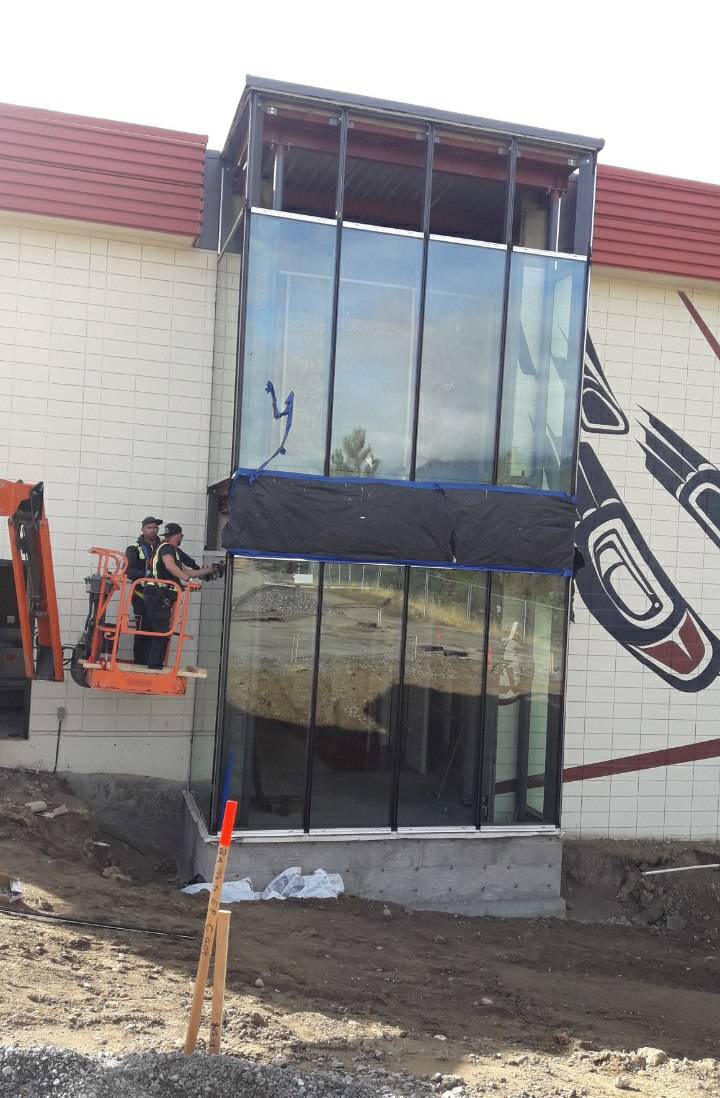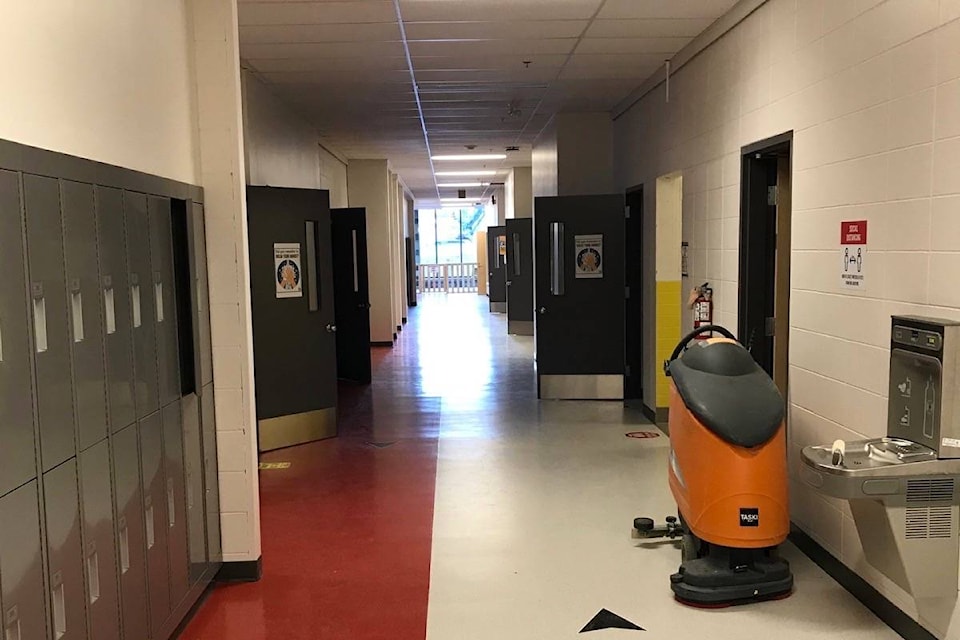The renovation project to convert Kumsheen Secondary School (KSS) in Lytton to a K–12 school is well underway, with the work scheduled to be complete in December 2020. Students in grades K through 7 have returned to Lytton Elementary until the work is finished, at which time they will join the secondary students at the newly-converted KSS, and Lytton Elementary will be closed.
The new school will be the third large K–12 facility and amalgamation in School District No. 74 (Gold Trail). In 2010 Clinton Elementary was closed and students were moved to a converted David Stoddart Secondary, and in 2015 Ashcroft Elementary closed, with Ashcroft Secondary converted to Desert Sands Community School.
READ MORE: Gold Trail trustees accept school closure recommendations
The question of closing Lytton Elementary has been an ongoing subject of discussion for the SD74 board of trustees since 2005. In 2013 trustees accepted a staff recommendation to close the elementary school buildings in Ashcroft and Lytton and create K–12 schools in the existing high schools in the two communities, and in 2018 trustees voted, by a margin of 4–3, to close Lytton Elementary.
READ MORE: School District No. 74 trustees vote to close Lytton Elementary School
“It’s exciting,” says SD74 Secretary-Treasurer Lynda Minnabarriet of the project’s progress. “Students are still split between the two schools, and we’re working out the move of students. That will depend on when work is officially complete, and we’re looking at a transition plan as we get closer to the completion date.”
Secondary students and staff have been relocated to the lower level of KSS, where renovations are mostly finished, and work is continuing on the upper floor. Minnabarriet says that the school’s two-level configuration makes the project a bigger one than the conversion of the one-level Ashcroft Secondary building. She also notes the Lytton school’s brick construction, and the lack of light on the lower level.
In order to address the latter issue, the end wall of the school has been opened up and a window wall installed that will allow natural light into both levels. This work has resulted in a partial removal of the mural on that section of the school, but parts of the removed mural will be recreated on the glass.
Ceilings have been lifted in most areas, classroom walls have been opened to the corridors, bathrooms have been re-tiled and new fixtures have been installed, and new windows, flooring, and painting have been added. Skylights have also been installed, which enhance the natural daylight, and new insulation and proper sealing of the exterior walls means improved air quality.
“The sense is that people are waiting to see what the completed project looks like,” says Minnabarriet. “Based on some of the tours that have happened, people are positive about the changes, but there’s still work to do.
“We’re focusing on students and families feeling comfortable: not just with the renovations but with the return to school in general. We want students and families to feel comfortable with the new facility.”
Still to come is a naming process for the newly-converted school, which is scheduled to take place this fall. Minnabarriet says that the naming of the school will be led by the school community; then, according to SD74 policy, the choices will come to the board for final determination.
“There’s no sense at this point about a new name. We don’t know if there will be support for the same name or a new one. Anything is a possibility at this point.”
SD74 has worked with the local communities, the Nlaka’pamux Nation Tribal Council, and provincial organizations to ensure that the project followed archaeological and environmental guidelines. While preparing for new water lines, contractors discovered an artifact that was identified as a large pestle, used for crushing or grinding substances. It has been delivered to Lytton First Nation, and highlights the important history of the area.
editorial@accjournal.ca
Like us on Facebook and follow us on Twitter

